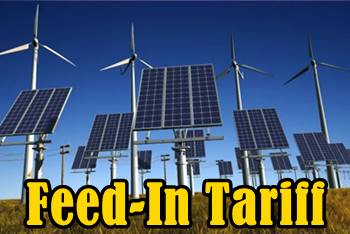Feed-In Tariff
What is a Feed-In Tariff?
A feed-in tariff is one such policy tool that is designed to endorse renewable energy source investment. Usually, this means promising and talented small-scale energy producers, like wind or solar energy, are above-Market price in comparison to what they provide to the grid.

There was a time when America was the forerunner in FITs. Back in 1978, the first FIT was implemented by the Carter administration in response to the 1970s energy crisis, which created long queues at gas pumps. Called as the National Energy Act, the Feed-in tariff was to promote the conservation of energy with renewable energy development, like wind and solar power.
Explaining Feed-In Tariffs
Generally, Feed-in Tariffs (FITs) are regarded as an essential tool to promote the sources of renewable energy in the early phases of development, when often production is not feasible economically.
Usually, FITs comprise long-term prices and agreements tied to the production cost of the energy being used. The guaranteed prices and long-term contracts safeguard producers from certain risks associated with the production of renewable energy; thus, promoting the development as well as the investment that might not have taken place otherwise.
Anyone who is involved in the process of produces renewable energy can get the eligibility for a feed-in tariff. However, those who get the benefit of FITs are generally not commercial energy producers.
They may include private investors, farmers, business owners, and homeowners. Basically, FITs work with three different provisions:
- They provide cost-based, guaranteed purchase prices; this means that the energy producers get paid in proportion to the Capital and resources expended to produce the energy
- They give long-term contracts, generally ranging from 15 to 25 years
- They guarantee energy producers to have access to the grid
Talk to our investment specialist
The Growth of FITs
Considering that the FITs have become extensively used all across the world, countries like China, Germany and Japan have used them successfully. Not just that, but there are dozens of more countries that have made use of FITs to a certain degree to get developed renewable energy.
In spite of the successful part that feed-in tariffs have played in endorsing the renewable energy development, certain countries are backing off from depending on them. Instead of FITs, they are seeking market-driven sources of control and support over the renewable energy supply that gets produced.
This includes China and Germany, two of the prominent FIT successful users. Still, FITs still play an essential role in renewable energy resources development across the world.
All efforts have been made to ensure the information provided here is accurate. However, no guarantees are made regarding correctness of data. Please verify with scheme information document before making any investment.





